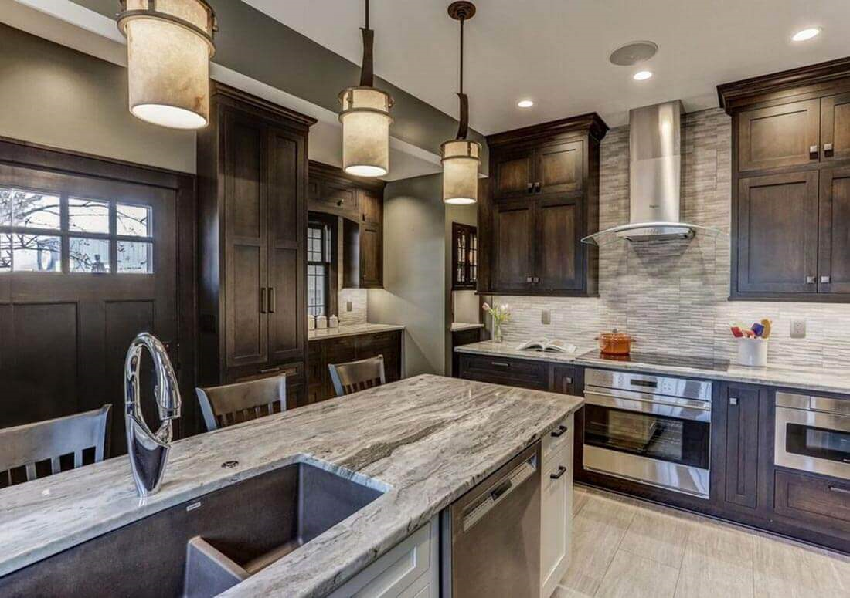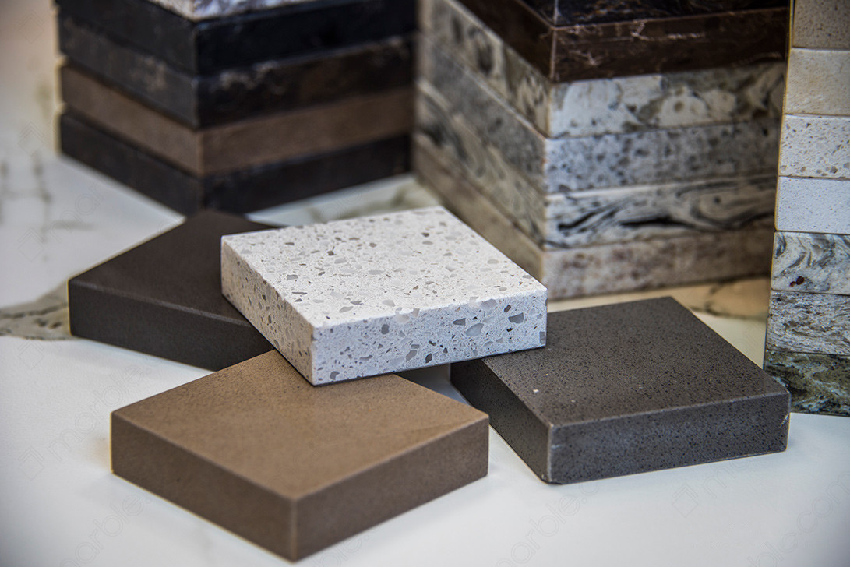
All materials have their pros and cons but it is clear that depending on your budget and the use you are going to give it, one will suit you more than another. Here you have everything you need to know which one to choose.
You may be thinking of renovating your kitchen or you may find yourself deciding what the kitchen of your new house will be like. In any case, the question will arise sooner or later: What material should I choose for the countertop? The answer is not easy (in fact there is no single answer) since everything will depend on many factors, both budget and functionality, and style. In any case, you have so many options and trends on the market that you will surely find the one that best suits you and your kitchen. We give you the pros and cons of various materials.
Granite
Granite is currently one of the most popular stones. One of its greatest advantages is that it has reached a degree of variety in which it is possible to have it in many colors, from red to white through black or gray. In addition, its slabs are cut into large pieces, so our countertop may not have any cuts, being a single piece and its design wins. Although it is extremely durable, to make it resistant to stains, it usually has a specific sealing treatment that lasts for several years and we have to clean it with a non-abrasive cleaner so as not to damage it.
Marble
For a stone to be considered marble, it must have only one thing in common: at least 50 percent of its volume must be calcite, dolomite, or aragonite. Therefore, we can see it in different colors and patterns, although less than granite. One of its great benefits is its elegance (you can see it in all these kitchens that have marble as the protagonist ), although one of its drawbacks is its high price. In addition, being a limestone requires that we protect the areas that are going to be used the most, to prevent them from wearing out or changing color, and we must not pour oils, grease, or waxes on it that can penetrate its surface, which is quite porous.
Artificial Stones
At present, materials made with compounds of different stones in an artificial way are an option to be taken into account. They are usually pressure-created materials with a majority of stone dust and a lower percentage of acrylic or other materials. Their advantage is that they are harder, non-porous, and extremely resistant. In addition, its catalog is almost infinite, giving the option of all kinds of colors, finishes, and even prints or glosses. Its drawback may be, perhaps, a still high price compared to other options.
Wood
Ecological, warm, in various shapes and colors… Wood can be the star material if it adapts to the style of your kitchen and has numerous options of different trees for almost all possible budgets. In addition, it has enough resistance to heat and, if it is properly sealed, it does not have to suffer too much with use (although it will always be slightly noticeable if you use it as a work area). As for its ability to prevent contamination of food, being a porous surface, the issue is not clear: some studies place it as a much safer material than a derivative of plastic while others say that it is a material that, without the convenient maintenance, I could be fodder for germs.
Cement Or Concrete
Do not think that, if you decide on a cement countertop, you will have a worker with a concrete mixer in your house. Nothing further. Nowadays it is very common to decorate with cement and the usual thing is that these pieces are made to measure and, once manufactured, they are installed in your home. Like any artificial material, you can have it in a multitude of colors. Of course, it needs to be specific concrete to withstand stains and cuts.
High-Pressure Laminate
We usually know it by its commercial name, Formica, although many more brands work with it. Its composition is surprising: numerous layers of kraft paper mixed with resins that give it great strength. It has a wide variety of colors and finishes, although it is easier to deteriorate or scratch and is less resistant to heat.
Acrylic Solid Surface
Another option of synthetic material is the acrylic solid surface known as a Solid Surface. It differs from the rest in that it is made of one hundred percent acrylic resin and one less part of natural minerals and pigments. Being artificial, it has a wide variety of colors, finishes, and shapes and, unlike others, it is completely repairable if you have a break. One of its drawbacks, yes, is that it does not have as much durability in use as other harder materials and it withstands less heat.
You may like to read Most beautiful garbage cans to recycle

